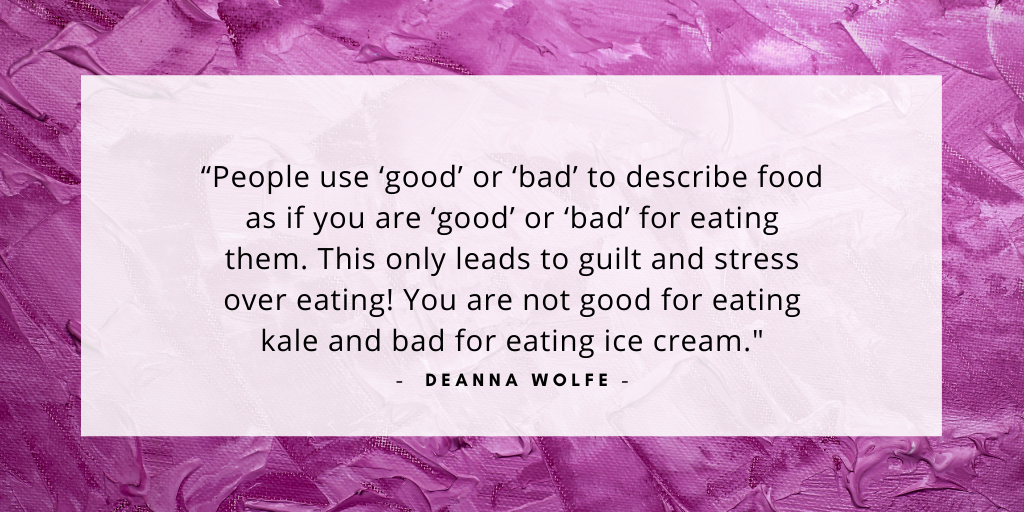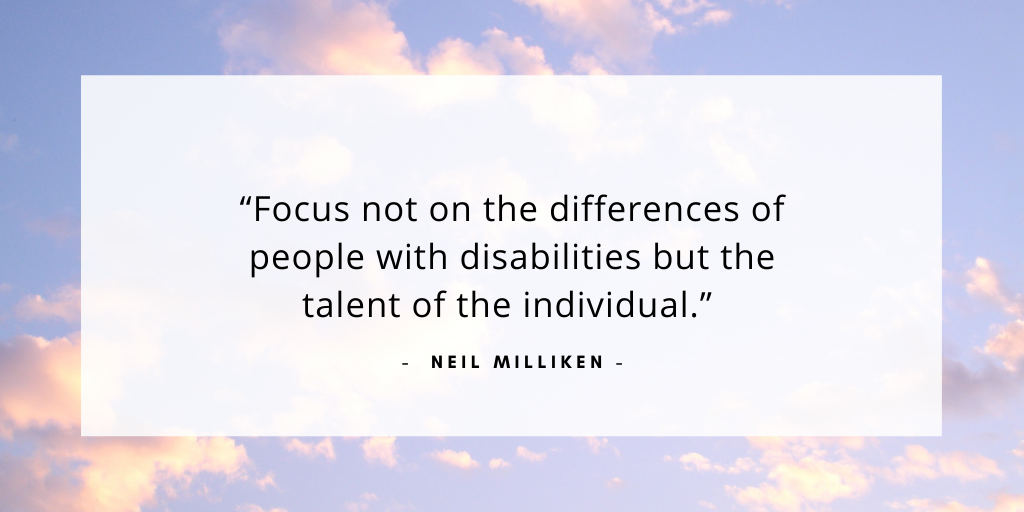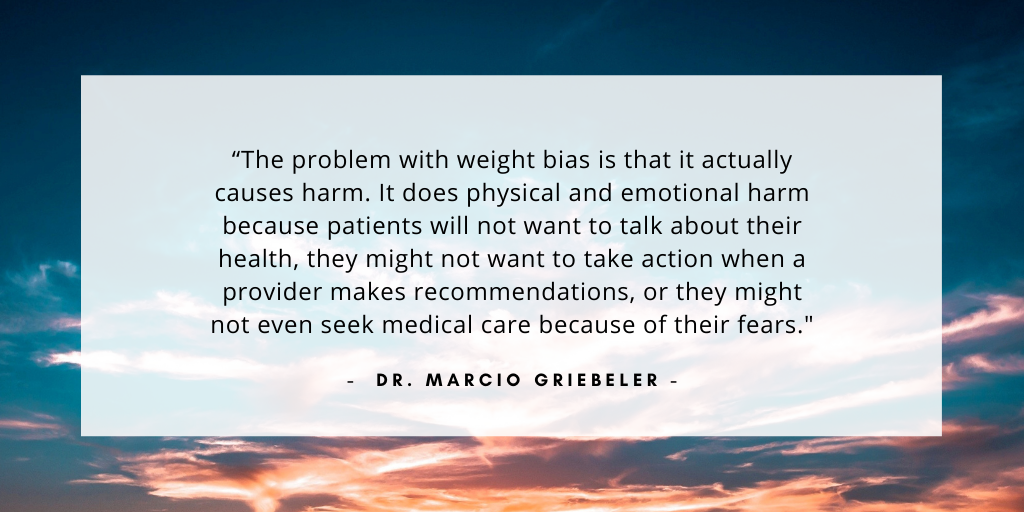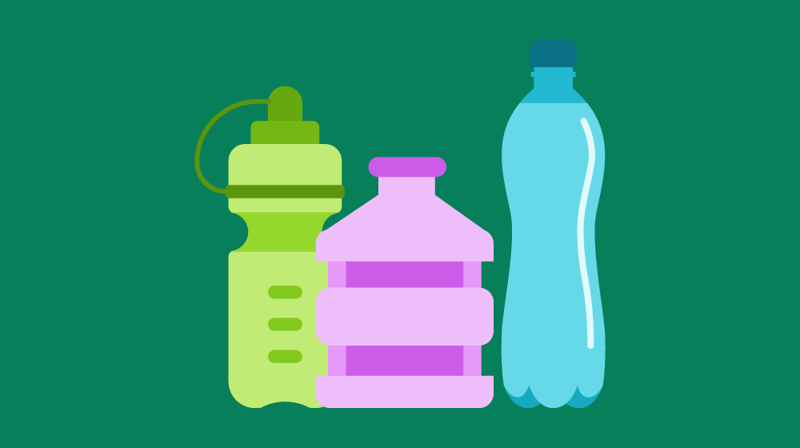Student affairs professionals usually have the best of intentions.
From “Microwave Meals in a Minute,” to wellness challenges, we often design programs that we hope will motivate students to take charge of their own holistic health. We want to equip students to thrive in all facets of life, so we bust out the wellness wheels and get to event planning.
May is Physical Fitness and Sports Month, which means there may be an uptick in these types of programs. And while it is indeed important to highlight the need to take care of our bodies, there are ways to do so while also valuing inclusivity and accessibility.
By becoming aware of the implicit and explicit biases that permeate the wellness industry, you’ll be able to create healthy spaces and inspire habits for all of your students.
As a side-hustling wellness coach, I’ve seen firsthand how the industry has negatively impacted many of the young women in my accountability groups. As a result, I’ve taken it upon myself to connect with registered dieticians and health experts, plus conduct my own research on how to best mitigate some of the most harmful effects of common wellness standards.
Since I’m not a verified expert, I can certainly empathize with how confusing this topic can seem. But by imparting some of this knowledge to you, it’s my hope that you’ll know what to keep in mind while planning a health-based program.
1. Steer clear of labeling foods “good” or “bad”
Programs related to food should include an expert nutritionist who can speak about food as fuel. However, if you don’t have a local or campus nutritionist to present, be sure to steer clear of claiming any professional expertise for yourself. This includes labeling foods as “good for you” or “bad for you.”
How many times have you seen programs with titles like “Eat This, Not That in the Dining Hall,” or “Grab a Healthy Study Snack”? Such programs emphasize problematic associations in the false values they place on foods.
For example, if you label pizza as a food to avoid, students may think they are being “bad” for eating it. This is not the kind of relationship you should want students to have with food; it prompts disordered thinking that may lead to restrictive dieting, binge eating, or chronic restrained eating. Conversely, if you categorize foods as healthy, that may be misleading, as what’s actually healthy is quite subjective.

The moral of the story is to work directly with a nutritionist or dietician on programs about food. But if you can’t, avoid labels or stick to sharing information that’s grounded in research. You can find great resources through NEDA, Mayo Clinic, and the Academy of Nutrition and Dietetics, just to name a few.
2. Acknowledge that food and fitness accessibility looks different for everyone
In an ideal world, everyone would have access to delicious, organic, whole foods. Everyone would have access to sophisticated cookware and ample time to prepare meals too. Gym membership would be affordable, with options on just about every block.
Unfortunately, that is not the reality.
There are hefty costs associated with “real” foods (veggies, fruits, and whole grains) and gym memberships. It also takes time — which many folks don’t have — to cook balanced meals and get in a full workout. Therefore, it’s important to acknowledge the socioeconomic barriers to this kind of lifestyle.
Although students might have access to a rainbow assortment of fruits in the dining hall and equipment at the rec center while they’re on campus, the same can’t be said when they head home for the holidays or are forced to move off campus after the housing requirement expires. So, programs that set unrealistic expectations for “clean” food consumption and regular gym-going can be more prohibitive and damaging than you may realize.
Consider making adjustments to your fitness programming by having a trainer demonstrate minimal-space, no-equipment-required workouts. Or you can provide students with information about local YMCAs or other rec centers that have low or no-cost entry fees.
Similarly, be wary of how you might be feeding into unrealistic expectations of clean food consumption. Don’t use scare tactics like the Dirty Dozen nor advise students to scour labels for harmful ingredients. Instead, highlight the positives — like the fact that most frozen veggies are packed with more nutrients than raw ones and are often on sale. After all, pre-packaged meals may be all that a student has access to or can afford. Show students what’s workable within their means.
3. Celebrate the culture around food
For many cultures, food is a celebration. It’s rooted in tradition, joy, and gathering.
When you get into conversations about eating or avoiding certain foods, or even following certain diets (like Keto, Paleo, and intermittent fasting), you are failing to consider the cultural repercussions. Telling a student that they should eliminate certain foods may mean eliminating a part of their identity.
So, think twice before showing a food-related documentary or designing a bulletin board about the benefits of veganism. Also, stay away from “healthifying” cultural meals (or, any meal, really). And by “healthifying,” I mean swapping out starch-based ingredients for cauliflower or swapping dairy products for low-cal, low-fat alternatives. In doing so, it, again, implies that certain ingredients are “bad” and takes away from the cultural authenticity of the dish itself.
Consider reinforcing that food is not solely tied to health; it’s intersectional in that it’s tied to identity and inclusion too.
4. Offer a variety of physical fitness opportunities that fit all skills and abilities
For Physical Fitness month, it’s understandable that you may want to sponsor a physical activity. Consider creating a robust set of offerings to align with all skill and ability levels.
For example, schedule a flag football tournament and a brisk trip around campus. Or, offer a chair yoga class and a weightlifting tutorial. It’d be awesome if you could schedule a game of pick-up wheelchair basketball, too, which would not only benefit wheelchair users but would also invite able-bodied students to learn about how their peers get around in the world.
The ways in which we move our bodies do not have to be universal. Highlight the many ways students can get their heart rates up to promote cardiovascular health! It’s more about the fun of the experience, rather than the competition or showing off your skills. So, be sure that your offerings appeal to all levels of fitness ability and enthusiasm — from beginners to avid gym-goers.

Go beyond the physical activity and bring in a trainer who can speak to the varying levels of physical exertion. Some students may love to work out every day while others may only have the ability or access to break a sweat once to twice a week. Students should be made aware of how they can care for their health, regardless of their circumstances or preferences.
5. Avoid the topic of weight altogether
First, it was the “Freshman 15.” Now, it’s the dreaded “COVID 19.”
You might be lured by the temptation to host a thematic program related to either term, but I caution you to avoid hosting weight-based events. Though that might seem obvious, there are sneaky references to body shape that often find their way into the learning outcomes of programs.
Weight loss is not a standard measure of health. So, having “getting in shape” as a program objective or marketing a fitness class as a means to “get ready for summer” are inherently flawed tactics even if they don’t include a direct reference to weight. The same can be said of focusing on calorie counts, serving sizes, or BMI.
In the same breath, you should use caution and carefully consider your words when employing body-positive language. Same for speaking about loving oneself at any size. Though usually well-intentioned (and often radically inclusive), such language can cause some students unexpected harm. Remember, there can be health-related reasons to lose weight. So, students should not be discouraged from doing so – as long as they’ve been advised by an educated, inclusive doctor to follow a realistic and healthy weight-loss plan. No student should feel pressured to follow a social movement to the possible detriment of their own health.
Lastly, be sure to pass these directives on to any campus partners who might be joining your program. For example, if you’re bringing in an athletic coach, be sure they don’t speak about weight class or logging meals, even if it is a piece of the sports program they oversee.

6. Educate students about prejudices within the health industry
Annual doctor’s visits are important. Whether it’s a physical check-up or a body scan at the dermatologist, it’s critical for students to take stock of their physical wellbeing. That said, you should make space for students who have not previously felt safe or welcomed in doctor’s offices to engage in your programming.
There are many stories of doctors blaming health concerns on their patient’s weights when, in reality, the number on the scale had nothing to do with it. Discrimination based on identities, especially race and sexual orientation, is also sadly rampant among doctors. These instances of injustice may rightfully lead to student pushback if you promote a health challenge that includes booking a doctor’s appointment.
That’s not to say you shouldn’t include that bit of advice. But don’t make it a requirement to win a competition of score points in a program. You should also provide ample resources to help students find a practice that is knowledgeable and embracing of all identities.
7. Recognize red flags and provide trusted resources as a means for follow-up
A quick op-ed search will pull up several stories illustrating how the wellness industry has plagued individuals with unrealistic standards, one-size-fits-all beliefs, and other harmful health-related rhetorics.
Although modern wellness movements started as a well-intentioned campaign to encourage folks to take care of their whole beings, it’s spiraled into a monopolized entity that’s damaging the self-worth of people everywhere, students included.
It’s essential, then, that you become aware of the telltale signs of eating disorders, disordered eating, compulsive exercise, and other mental illnesses that are often correlated with pressures related to food and exercise. Familiarize yourself with campus resources, national hotlines, and local support centers, too, so you can connect students with help should you become aware of a concern.
We all want our students to be healthy and well. Unfortunately, there is an influx of information floating around the internet — some quite credible, some not — that hinder students’ ability to truly thrive. When making wellness a programmatic priority this Physical Fitness and Sports Month (or anytime), do your due diligence to create spaces wherein students will feel holistically seen and cared for.





